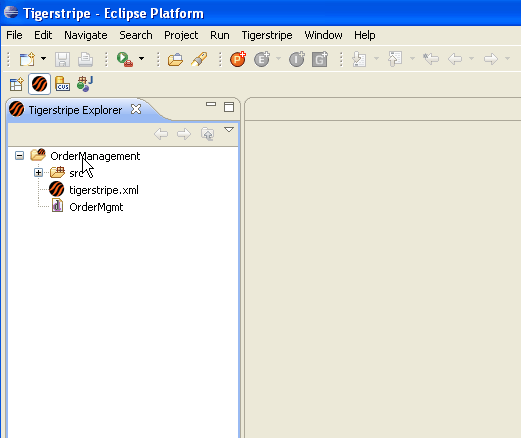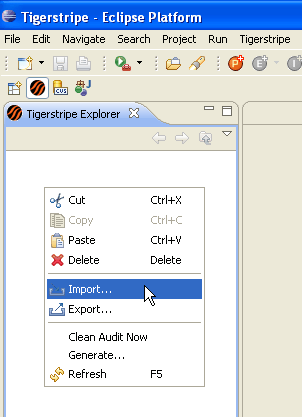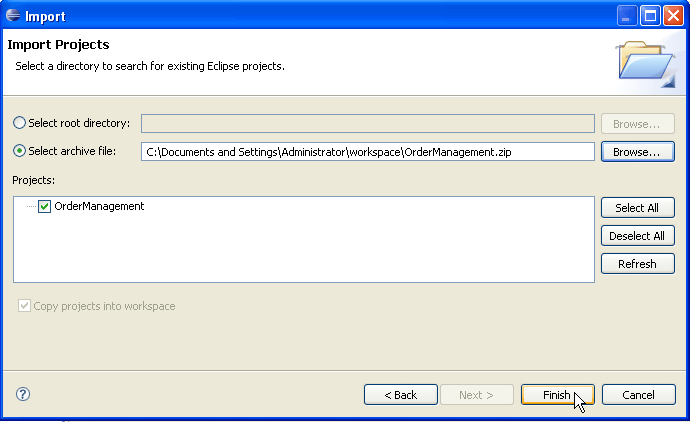Notice: This Wiki is now read only and edits are no longer possible. Please see: https://gitlab.eclipse.org/eclipsefdn/helpdesk/-/wikis/Wiki-shutdown-plan for the plan.
Difference between revisions of "Tigerstripe Headless Generation Tutorial"
(→Importing an Example Model) |
(→Importing an Example Model) |
||
| Line 16: | Line 16: | ||
#* Select General -> Existing Projects into Workspace. Click "Next >" <br> [[Image:Import2.gif]] | #* Select General -> Existing Projects into Workspace. Click "Next >" <br> [[Image:Import2.gif]] | ||
#* Click "Select Archive File" and browse to the location of the sample model project .zip file. Click "Finish" <br> [[Image:Import3.gif]] | #* Click "Select Archive File" and browse to the location of the sample model project .zip file. Click "Finish" <br> [[Image:Import3.gif]] | ||
| − | # | + | # Verify that the project is in your Tigerstripe Explorer pane.<br> [[Image:Import4.gif]] |
=Installing Tigerstripe generators= | =Installing Tigerstripe generators= | ||
Revision as of 14:29, 12 June 2008
< To: Tigerstripe_Tutorials
NOTE THIS IS A DRAFT PAGE
This tutorial will show you how to configure Tigerstripe to run code generations in a headless environment. This will allow you to incorporate Tigerstripe's code generation functionality into a build chain using many of the commonly available build tools, specifically Maven 2.
Contents
Tigerstripe Installation
See the Tigerstripe Installation Tutorial page for instructions on installing the Tigerstripe Workbench.
Importing an Example Model
- Download the sample Tigerstripe model project OrderManagement.zip.
- Start Eclipse and then open the Tigerstripe Workbench perspective.
- Import the sample project, OrderManagement.zip into the Tigerstripe Workbench.
- Verify that the project is in your Tigerstripe Explorer pane.




